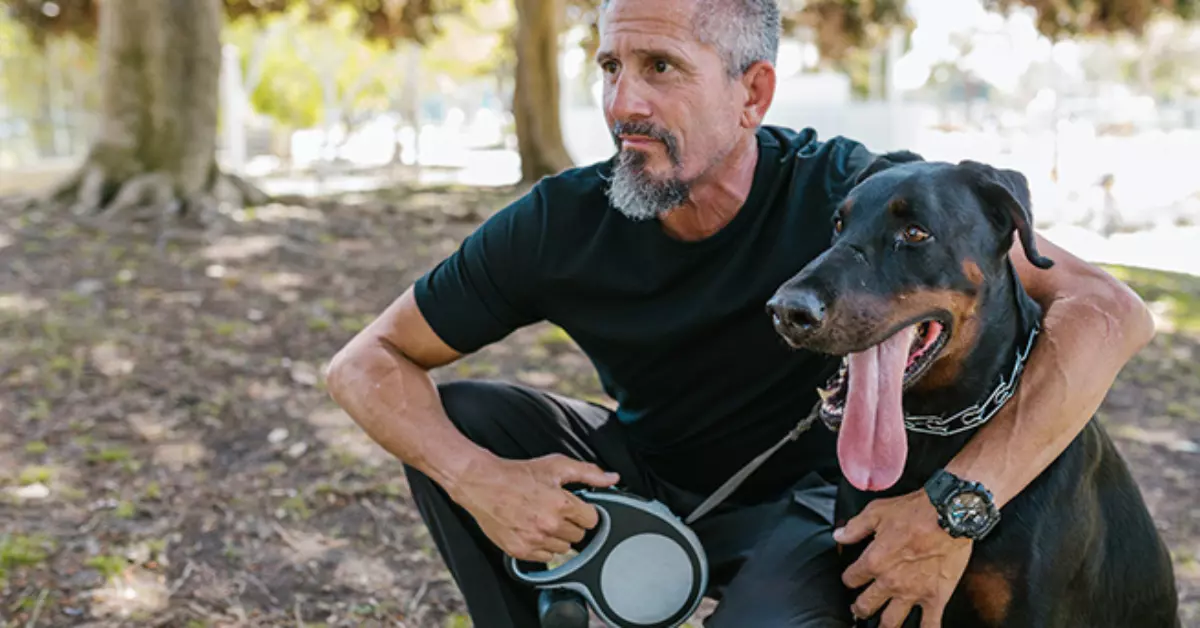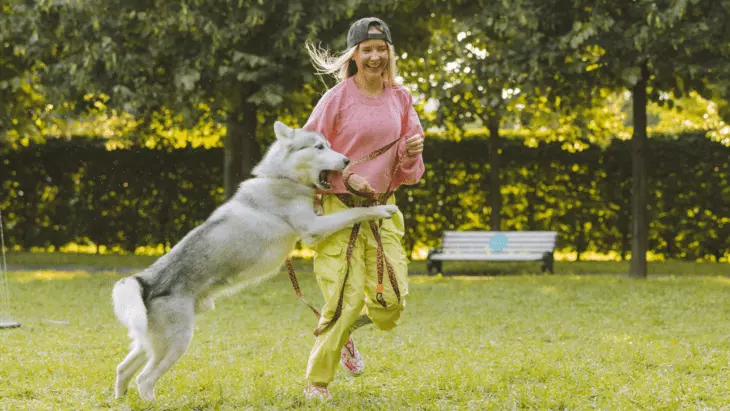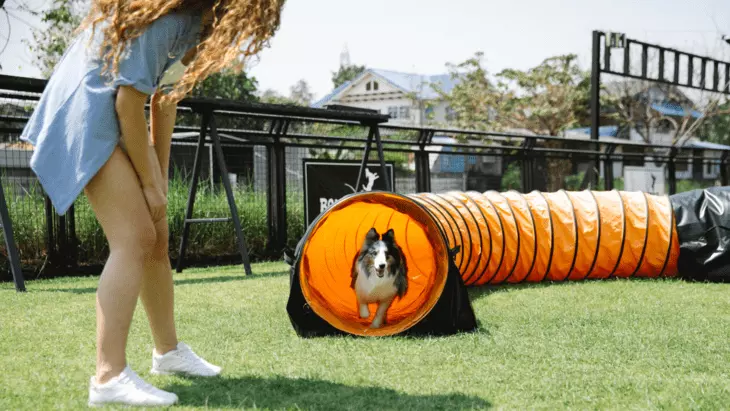A Guide On How To Train A Big Dog At Home
Knowing how to train a big dog has its challenges. Without the right approach, a pet owner can easily become overpowered by the canine’s unwieldy size.
As a Golden Retriever owner, I know this situation exactly. While our dog Sherlock is a fast learner, it sure takes a lot of patience to handle his large size and puppy ways.

In other breeds, the canine’s large size can result in injuries during training. It’s the reason why you have to come up with a training strategy first to ensure that you can handle your dog.
Take note that no matter how frustrating it gets, training is crucial for large canines. It’s because untrained large canines can be a serious threat to the people around them, especially to small children.
In this post, I share some advice that you can also consider if you’re about to train a large canine. When all else fails, remember that a professional dog trainer is the best person to consult.
Helpful advice when training a big dog

1. Start your dog young
You wouldn’t want to wait until your big dog reaches its adult size before you start training. You should expose the pooch to training as early as possible.
This way, you can teach your dog basic commands before it becomes too big to handle. While puppies tend to be more stubborn, they are easier to control physically.
Also, younger dogs are yet to develop their habits and predispositions. This means that it’s easier to correct wrong behavior in a pup than in a full-fledged adult canine.
You have to teach your dog who’s the boss while it’s still young. You wouldn’t want the pooch to grow up getting used to tackling you during training.
Overall, you can start training your dog as early as 8 weeks old. It should be your first order of business the moment the pup arrives in your home.
2. Utilize the reward system
All dogs, big or small, thrive with the reward system. The idea here is to reward good behavior, so your big dog will learn that following your commands has some form of reward.
This is also known as positive reinforcement. By providing rewards, you’re making your dog associate an ideal behavior with a positive experience.
In terms of reward, there are two types you can utilize: food and affection.
Food rewards like tasty treats and kibble pieces are convenient since they can be easily purchased in pet stores. It’s also a foolproof method since almost every canine is heavily food-driven.
When picking a food reward, opt for small, low-value pieces that are easy to chew and swallow. The goal is to reward your dog without distracting it from the training process.
You can reserve big value treats like chew bones later once you end the training. It’s a great way to conclude the training positively, so your dog will become more cooperative in the succeeding sessions.
Another form of reward you can use during training is affection. Large dogs acclimate well to an affectionate and nurturing environment, which will make training easier.
Aside from that, affection will help reduce any aggressive tendencies in your dog. After some time, you can also start replacing food rewards with affection.
3. Keep the leash short
When training a big dog at home, you must keep the leash short. A large dog can easily drag you around if you let them roam around on a long leash.
Aside from that, it’s not a good idea to give untrained large dogs too much freedom. With a short leash, you can keep them away from potentially attacking or biting anyone.
Take note that you should never use retractable leashes when training a large dog. This is an ingredient for disaster once the doggo pulls and runs.
Instead, purchase a rope-type leash with a short length. This is more durable and will last longer than thin ones.
4. Train your dog not to jump
Dogs jump by instinct and it will be a dilemma if you have a large dog. Lunging and jumping can easily topple a child or person.
With that, you must eliminate this habit first before you proceed with other training steps.
You should train your large dog to remain seated whenever there are guests or other pets around. Aside from keeping your dog disciplined, it’s also more polite for the people around.
As mentioned earlier, positive reinforcement is the best method when training a dog. Make sure that you reward your large pooch whenever it follows your ‘seat’ command.
5. Don’t forget about socialization
Socializing a large dog is a must to ensure that it won’t become a threat to other people. You should expose your doggo to various stimuli as early as possible, so it will become desensitized.
Moreover, socialization teaches large dogs to react positively to various situations. For breeds like Rottweiler, German Shepherd, Pit Bull, and Chow-Chow, socialization is effective in curbing aggressive tendencies.
You can start socializing your large dog by introducing them to your friends. After that, you can take the pooch to dog parks, dog beaches, and other public areas with a crowd.
Throughout these outdoor trips, your large dog should be trained. It’s also crucial that the pooch is already obedience trained to ensure the safety of everyone.
6. Consult a professional pet trainer
If all your efforts fail, the best way to go with it is to consult a professional pet trainer. This expert can help address the behavioral problems of your large dog efficiently.
While this service costs a fee, your large dog will receive proper training. It’s a fail-safe solution, especially if your dog is already an adult and difficult to manage.
Are big dogs easy to train?
The trainability of dogs isn’t just dependent on their size. There are large canines that are worthwhile to train and small ones that will really test your patience.
Nevertheless, a large size surely poses a challenge for pet owners. A stubborn canine with a large body is difficult to handle and will require a lot of physical effort.
The key here is to train your large dog breed as early as possible. So before your pooch reaches its adult size, it’s already disciplined and easier to introduce to advanced training.
How do you control a big dog?
Harnesses and leashes provide some level of physical control to your large doggo. However, this is only as effective as your physical stature.
The best way to control a big dog is to subject it to rigorous training. There’s no point trying to wrestle with an untrained dog since it will only lead to injuries for both you and the canine.
A large dog must be trained in the same level and manner as any dog breed. Never use punishments and violence as this method will only make the canine harder to control.
Moreover, desensitizing your large dog will also help you control its reaction to various stimuli. It should be done together with training to further discipline your pet.
Lastly, proper exercise is integral to helping shape your large dog’s temperament. A tired dog is a cooperative dog, which will enhance your control over its behavior.
What is the easiest big dog to train?

Despite their large size, there are big dog breeds that are worthwhile to train. Some of these are Poodle, Golden Retriever, Labrador Retriever, Newfoundland, Rottweiler, and Doberman Pinscher.
These canines are smart and will respond to training positively and quickly. But then again, you should have the right approach to maximize the training potential of these breeds.
Just remember that each dog is different and so is their response to training. You must be patient and consistent to see results from your efforts.
What is the safest big dog to own?
One of the misconceptions about big dogs is that they are dangerous to own. The truth is that these large canines can be sweethearts too.
Breeds like Bernese Mountain Dog, Saint Bernard, and Newfoundland are called ‘gentle giants’ for a reason. Despite their large size, they remain gentle and patient, especially towards kids.
Aside from that, the idea of safety depends on what you can tolerate and handle. If you’re willing to train a canine rigorously, even a notoriously aggressive breed will be safe under your watch.
What is the most disobedient dog breed?
If you’re looking for a large dog to be your next pet, you should be careful with the least obedient breeds. These canines are stubborn and therefore harder to train.
Some of these breeds are Afghan Hound, Chow-Chow, Borzoi, Welsh Terrier, Beagle, and Pekingese. Although some of these breeds are small, they have quite a massive personality that requires a lot of patience and training.
Unless you can keep up with their temperament, you should consider more obedient dogs. Surprisingly, many obedient dogs are large in size.
Conclusion
Training is crucial for all dogs, regardless of size. Nevertheless, knowing how to train a big dog surely has its challenges.
It’s important to start training your large dog as early as possible. Also, you shouldn’t hesitate to consult a professional trainer if your training efforts aren’t working.
